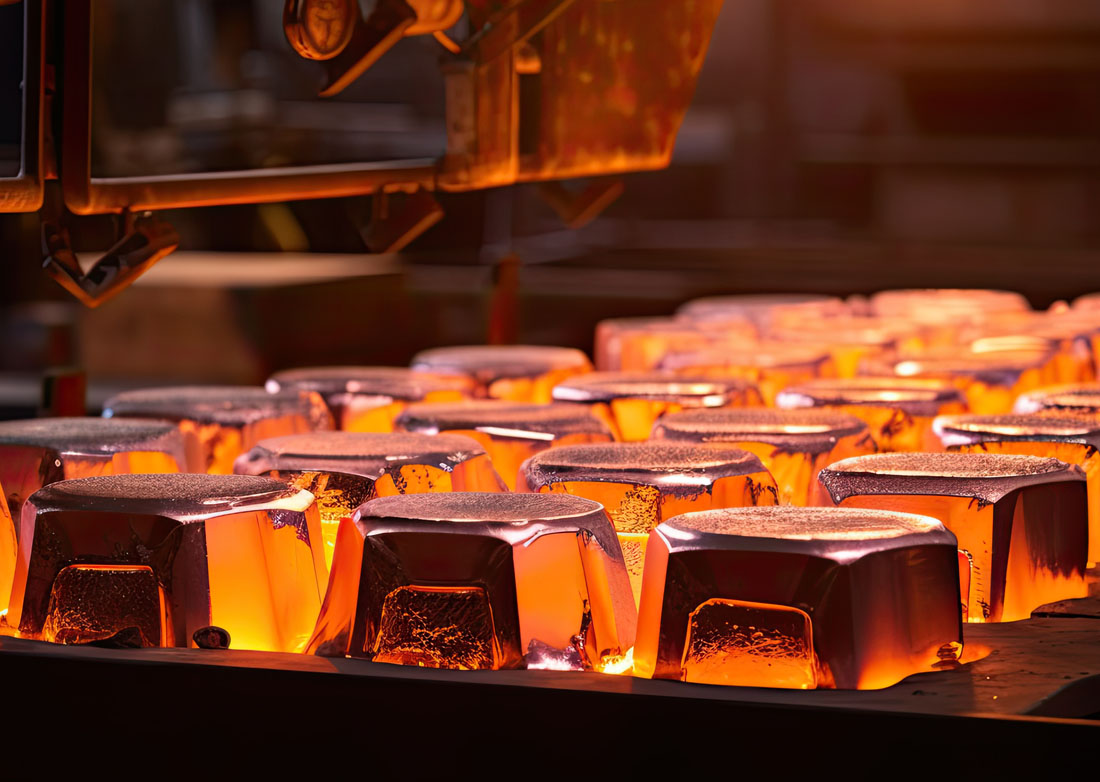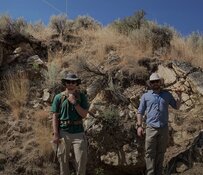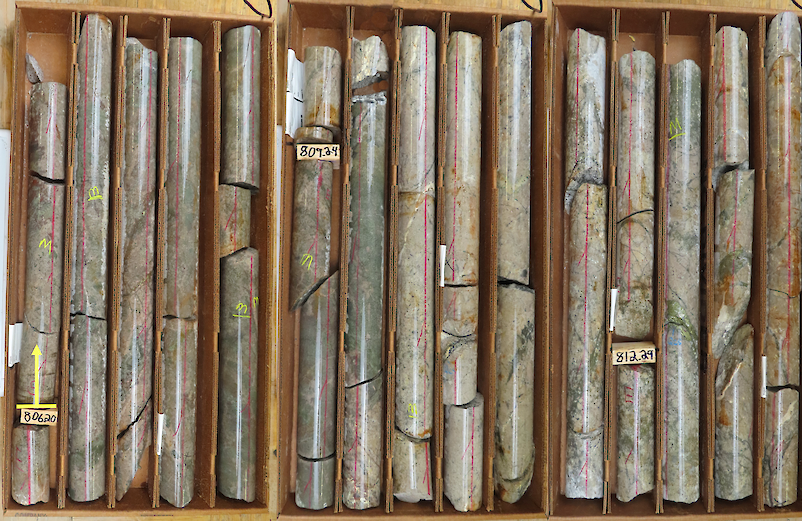The Gold Report: Kwong, investors have transferred billions of dollars from fixed income mutual funds into equity funds during the past few months. The mainstream media is calling it the "great rotation." Do you expect that movement to result in higher bids for precious metals and mining equities?
Kwong-Mun Achong Low: There's some credence to it because some corporations have strengthening balance sheets and improving profits. Also, the Volatility Index (VIX) is at a five-year low and equities tend to outperform when volatility is low. I think that more capital will come back to equities and by extension some precious metals names will see benefits.
TGR: Will that capital reach all the way down to the junior mining equities?
KAL: Not all junior mining companies. Investors are very selective right now, looking for quality.
TGR: You're following a handful of development-stage stories with near-term cash flow and some relatively small-cap producers. What time frame does "near term" imply?
KAL: Mostly 6–12 months. I look for companies that are fully financed to get to production and cash flow. For example, Santacruz Silver Mining Ltd. (SCZ:TSX.V), a near-term silver producer in Mexico, is supposed to be in commercial production within the next few months. It just completed a $40 million ($40M) financing to help finance this and future projects. It could grow from about 500,000 ounces (500 Koz) silver this year to more than 5 million ounces/year (5 Moz/year) by 2015. There's lots of good growth there with the potential for a rerating that miners entering full scale production typically enjoy.
"Equities tend to outperform when volatility is low."
TGR: Santacruz Silver is conducting a 7,000 meter (7,000m) drill program that's targeting the southeast and northwest zones of its Rosario project in Mexico. You hypothesized that given the continuity of the trend of mineralization, the drill program could increase the Measured and Indicated resource by 60% to about 16.1 Moz silver equivalent. What gives you the confidence to make that bold claim?
KAL: When I was at the site, I was able to look at some of the cross-sections of its recent drilling and detailed models of the current resource. The ore body seems continuous and as the company steps out drilling from the defined 500m of strike to explore the full 2.5 kilometers of potential, I expect the deposit to expand incrementally. As such, I don't think my estimate seems that aggressive. It's an extrapolation of what could be found within the year.
TGR: Would you consider Santacruz a high-grade project?
KAL: I would. The company has three main projects that it's focusing on and exploring. All of them have silver grade of at least 100 grams per tonne (100 g/t), which is rare in the silver space for the junior market. It's definitely a benchmark grade that I look for when I'm considering how viable a project could be.
TGR: It's supposed to reach commercial production in the first quarter. Is it on track?
KAL: It is on track. It's been commissioning the mill for the past couple of months. It should be placing ore into the mill soon. Soon after that there should be some commercial production. If it slips, I don't think it will slip by much.
TGR: Tell us more about what you look for in a company.
KAL: Company management first and foremost. Has it done this thing before and does it have the experience? Second would be the asset. It's best if there's scarcity value attached to the asset such as the highest grade, best production profiles for the capital expenditure (capex), and if it is close to infrastructure. Lastly would be political jurisdiction. My preferences would be for the tried and true regions like Ontario or Nevada.
After, I branch off into two categories: Who could be taken out and who could actually get into production on their own?
TGR: Newsletter writer John Kaiser recently said that as many as 500 junior mining companies could be forced off the TSX Venture Exchange this year. Do you believe that estimate is reasonable? Would that ultimately be healthy for the sector?
KAL: I think that it should be that many, but whether that will come to fruition is another story because it's in the exchange's best interests to keep as many companies listed as possible.
However, there definitely needs to be a purge. Investors are so jaded that they don't even want to hear anything when you call them with a good-quality name. There's too much noise out there. If the companies that should be leaving the market actually left, investors could put some faith and money into what was left.
TGR: There are lots of pretenders in the junior mining equity space that are frustrating investors. Some projects under development are going nowhere and everyone but the investors seem to know that. Who can investors trust?
KAL: It's a fair question for the times we're in. I can only speak for myself. I try to follow strict guidelines. Before I pick up coverage, a company has to pass the management, asset and jurisdiction tests that I mentioned earlier. It also has to make sense on a fundamental basis. Is it actually worth how much it's trading in the market? I do a fully financed model accounting for all the dilution and financings that a company has to do. I make sure it is still reasonable on a discounted cash flow basis.
TGR: Let's talk about some of the companies that make that cut. Some of them have a sizable capex to reach production, but at least one of those names doesn't have the cash to build a mine. Are these companies valued strictly on their potential as takeover targets?
KAL: That does factor in, but even though some don't have the cash to fully finance their capex, it's reasonable to consider other sources, like project debt, royalties and streams, and monetizing of non-core assets.
"Before I pick up coverage, a company has to pass the management, asset and jurisdiction tests."
For example, Probe Mines Limited (PRB:TSX.V) should be coming out with a preliminary economic assessment (PEA) in the next few months. I am assuming $450M capex and, depending on if some warrants come in over the next few months, it could have as much as $50M in cash with some assets that still could be monetized such as the chromite asset in the James Bay area. It could also raise some debt, which would give it a fair chance of getting to production on its own accord, in our view.
TGR: Who is going to buy that chromite asset? It's not as if Cliffs Natural Resources Inc. (CLF:NYSE) is buying up chromite plays any more. And Noront Resources Ltd. (NOT:TSX.V) doesn't have a lot of spare cash these days.
KAL: There are very few players who might buy it, so it wouldn't be near term. Cliffs is still progressing its chromite development. As Cliffs progresses, Probe Mines' asset will become more valuable because of its proximity to Cliffs' assets.
TGR: It is one of the few properties Cliffs doesn't own.
You also believe that Probe Mines could be a takeover target based largely on the takeovers of Prodigy Gold Inc., which had the Magino gold project, and Trelawney Resources Inc., which had the Cote Lake gold project. Probe's Borden project is a similar size, but is it a mineable deposit?
KAL: I believe so, but we'll have to wait for the PEA to shed more light on it. Notably the deposit comes to surface, which benefits open-pit mining, and there have not been any red flags from the preliminary metallurgical studies. The resource is substantial: Apart from the 4.3 Moz deposit at about 1 g/t grade, Probe has a higher-grade core that could be more economically robust. It has 2.3 Moz gold at 1.7 g/t. An open pit with those grades means it may not cost as much to reach a certain level of production because the mill doesn't have to be as big to get there. For the first five years of production, I'm assuming it can get 250 Koz gold at cash costs of $500/ounce ($500/oz) with start-up in 2017.
TGR: Where else can investors find near-term cash flow?
KAL: Minera IRL Ltd. (IRL:TSX; MIRL:LSE; MIRL:BVL) already produces about 25 Koz gold every year, but it also has a bigger flagship project in Peru that it wants to bring on-line. That project's capex is about $180M, which is a bit of a tall order because its market cap is a fraction of that. However, it could use the cash flow from its producing mine or take on some project debt to help get this flagship project into production.
TGR: Minera is cheap compared to its junior producing peers, with an enterprise value of $40/oz versus a median average of $79/oz. What accounts for that gap?
"We are in a market environment where investors want less risk and lower capex."
KAL: Investors are factoring in the financing risk of putting all its ounces into production. Some of those ounces are at the secondary asset in Argentina, which does have some political risk around it. The company is working on bringing in a joint venture partner based in Argentina that can help advance the project and completely decouple that risk from its Peruvian assets. If that political risk is mitigated, it has a higher likelihood of financing its other ounces into production.
TGR: Should investors be more excited about Minera's Don Nicolas or Ollachea project?
KAL: Ollachea, because it is in Peru and just started underground drilling to grow the resource. Minera has completed its exploration tunnel and is advancing the project.
That said, investors could be excited about Don Nicolas as well since it is in Santa Cruz province, one of the more mining-friendly jurisdictions in Argentina. It's next to Goldcorp Inc.'s (G:TSX; GG:NYSE) and Yamana Gold Inc's. (YRI:TSX; AUY:NYSE; YAU:LSE) development projects so it has the right address.
TGR: Could it help change investor sentiment about Argentina if Minera gets Don Nicolas into production?
KAL: It could take a lot more than that. Goldcorp is having so much trouble—if a senior is having so much difficulty then you know it's a pretty tough environment. Inflation is still rampant in the country at around 20%, which can force capex up. Goldcorp has nearly doubled the capex on its project to well over $1 billion. That is why we feel it is so important for Minera to find an Argentina-based JV partner.
TGR: Are there any other companies that could get to production on their own?
KAL: Solitario Exploration & Royalty Corp. (SLR:TSX) in Nevada has an open-pit heap-leach project on a past-producing mine that could back into production for only $75M. It would end up producing about 63 Koz gold/year at $575/oz, which we see as one of the more robust and more advanced development projects in Nevada currently. I expect it to get the permits in the first half of 2014, with production in 2015.
TGR: What accounts for the "royalty" in Solitario's name?
KAL: Its royalty is on a zinc project in Peru, where it owns a 30% fully carried interest on Bongará, a high-grade underground zinc project. The majority joint venture partner is Brazil-based Votorantim Metais, one of the largest zinc producers in the world.
TGR: Royalty plays were once strictly the domain of larger companies, but smaller names in this space have entered that arena over the last few years. Can the smaller players make the numbers work as far as royalties go?
KAL: We have seen a couple of them come to the forefront recently. One is Premier Royalty Inc. (NSR:TSX), which recently did a deal to acquire some smaller-scale royalties from Yamana Gold that an intermediate or major likely wouldn't be interested in.
TGR: They'd be immaterial to a larger company?
KAL: Yes, but they're still enough to build a smaller company. The majors are taking note because Sandstorm Gold Ltd. (SSL:TSX) acquired 60% of Premier Royalty specifically to keep an eye on the junior space.
TGR: Why didn't Sandstorm just buy it outright?
KAL: I think it wants to focus on larger royalty deals and allow a separate management team to look at the junior space. Also, their majority position prevents anyone else from buying Premier Royalty outright so there is no rush.
TGR: Are there other companies with a royalty angle that you find appealing?
KAL: Treasury Metals Inc. (TML:TSX) also has a producing royalty on Goldgroup Mining Inc.'s (GGA:TSX) Cerro Colorado mine in Mexico that provides annual revenue on the order of $1M. However, Treasury's main focus is on its Goliath gold project in northwestern Ontario, just outside the town of Dryden. The capex is about $90M and it could get to 80 Koz/year at about $700/oz cash costs. The mine would start with an open pit with mill feed over 3 g/t gold. Its recent PEA showed an after-tax internal rate of return of more than 30% at $1,375/oz gold.
TGR: Does Treasury Metals have the cash to develop that site? I heard it was having some trouble raising cash.
KAL: I expect investors are looking at the PEA and wanting more. Treasury Metals is drilling in through a parallel zone that could lower the overall strip ratio and by extension the cash costs of the project. As the company goes straight to feasibility by the end of this year, investors will start to see that the economics are improving. I believe investors will then start to put some money behind it.
TGR: Are there similar plays out there that you're following?
KAL: I just launched coverage on Americas Bullion Royalty Corp. (AMB:TSX), formerly known as Golden Predator Corp. The company has had a royalty portfolio for a while, but it only just shifted its focus onto it. It's no wonder why. Americas Bullion has one of the highest quality royalty portfolios out there of the juniors, in our view. It has good operators, Barrick Gold Corp. (ABX:TSX; ABX:NYSE) and Midway Gold Corp. (MDW:TSX.V; MDW:NYSE.MKT), which is ex-Newmont Mining Corp. (NEM:NYSE) management. These royalties are located in Nevada, which mitigates political risk and all the royalties could be paid in kind, which avoids currency risk.
TGR: How does a junior explorer that's looking for precious metals deposits in the Yukon all of a sudden become a royalty play?
KAL: There's still some promise that the Yukon could get some mines into production—there are some success cases there—but it's not an easy operating environment. Americas Bullion decided that it could not be stagnant in the current market environment. The company has to adapt to what investors are looking at right now. It's easier for investors to look at royalty companies over producers, especially given their outperformance by such a wide margin over the last few years. It is a change in focus for Americas Bullion, but it's a good change that's better suited to a market environment where investors want less risk and lower capex.
TGR: When are we going to see Americas Bullion generating cash flow?
KAL: Some of its major royalties start to produce in 2014. It could have as much as $6M in revenue in 2015, and double that by 2017, all with wide operating margins as is the case in the royalty space.
TGR: Do you believe more companies will make the move into royalties?
KAL: I believe so. There are a number of junior royalty companies out there, but they have one-off assets or may not be in production for many years. I could see some consolidation in the space to gain some sort of critical mass.
TGR: What size is the sweet spot for projects right now?
KAL: I think anywhere from 100–300 Koz/year for gold with capex under $600M.
TGR: Thanks, Kwong, for your insights.
Kwong-Mun Achong Low is a mining analyst with Jennings Capital with a focus on precious metal equities. He previously worked at a Canadian bank owned dealer and at a U.S.-based brokerage. Achong Low obtained both his Master of Business Administration and Bachelor of Science degree in mechanical engineering from the University of Toronto. He is also a CFA charterholder.
Want to read more Gold Report interviews like this? Sign up for our free e-newsletter, and you'll learn when new articles have been published. To see a list of recent interviews with industry analysts and commentators, visit our Streetwise Interviews page.
DISCLOSURE:
1) Brian Sylvester conducted this interview for The Gold Report and provides services to The Gold Report as an employee or as an independent contractor. He or his family own shares of the following companies mentioned in this interview: None.
2) The following companies mentioned in the interview are sponsors of The Gold Report: Probe Mines Limited, Minera IRL Ltd. and Goldcorp Inc. Streetwise Reports does not accept stock in exchange for its services or as sponsorship payment.
3) Kwong-Mun Achong Low: I or my family own shares of the following companies mentioned in this interview: None. I personally or my family am paid by the following companies mentioned in this interview: None. My company has a financial relationship with the following companies mentioned in this interview: Minera IRL Ltd. I was not paid by Streetwise Reports for participating in this interview. Comments and opinions expressed are my own comments and opinions. I had the opportunity to review the interview for accuracy as of the date of the interview and am responsible for the content of the interview.
4) Interviews are edited for clarity. Streetwise Reports does not make editorial comments or change experts' statements without their consent.
5) The interview does not constitute investment advice. Each reader is encouraged to consult with his or her individual financial professional and any action a reader takes as a result of information presented here is his or her own responsibility. By opening this page, each reader accepts and agrees to Streetwise Reports' terms of use and full legal disclaimer.
6) From time to time, Streetwise Reports LLC and its directors, officers, employees or members of their families, as well as persons interviewed for articles and interviews on the site, may have a long or short position in securities mentioned and may make purchases and/or sales of those securities in the open market or otherwise.




































